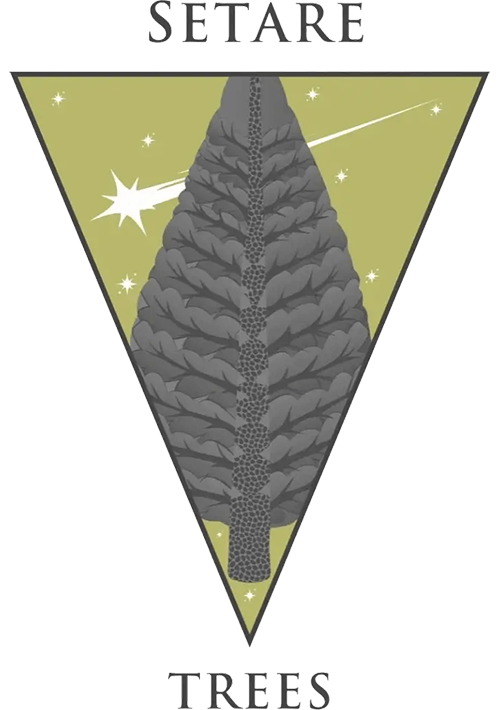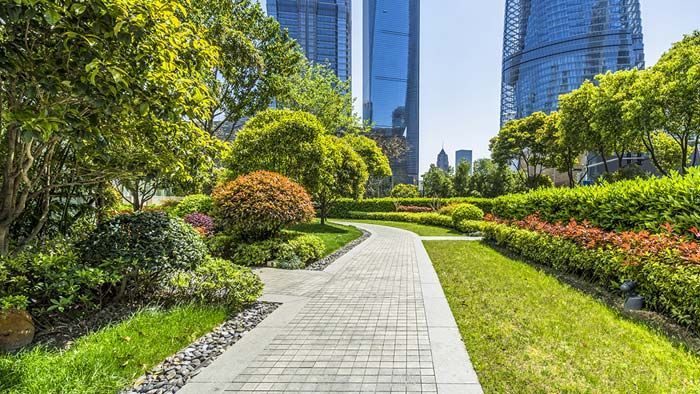Tree Treatment Services
Contact us now to get a free estimate!
Identifying & Treating Tree Diseases
The effects of tree disease can swiftly escalate from merely unsightly to genuinely hazardous, threatening both the aesthetic appeal and the structural integrity of these cherished landscape features. An arborist from Setare Trees Inc. can enhance the health of your afflicted or at-risk trees, ensuring the continued vitality of your property by:
- Accurately diagnosing the presence of a disease in your tree;
- Applying field-tested ingredients targeted to the specific pathogens infecting your tree;
- Identifying — and correcting — any conditions in, or around, your tree that make it vulnerable to disease. Our arborists take a holistic approach to disease treatment. They will complement anti-disease applications with any corrective tree care services — such as pruning or soil improvement– that will help prevent disease in the future.
Preventive Care Offers the Best Protection
In the realm of tree care, a strong defense stands as the best offense. Taking a proactive approach is essential for safeguarding trees from the detrimental effects of diseases. The most effective strategy involves a series of preemptive foliar treatments, tailored to the specific pathogens that pose a threat to the tree, thereby minimizing the infection levels on treated leaves. Timing is crucial: these anti-fungal and anti-bacterial treatments must commence early in the season to achieve optimal results. If postponed, your arborist may have to defer treatment until the next season.
Inspect, Identify, and Correct: Steps to Effective Disease Treatment
Your Setare Trees Inc. arborist will design a customized and multi-pronged disease treatment plan targeted to the type of tree, the specific pathogen, and the site conditions.
01. Identify and Treat the Specific Disease.
Your arborist will perform a visual inspection of the foliage, trunk, and stems of the symptomatic tree for evidence of disease. If detected, they will recommend a course of preventive treatments most appropriate for the specific pathogen and tree species. Your arborist may also recommend fertilization or other soil amendments to improve growing conditions and increase overall tree health, which will allow them to recover more quickly from damage and better defend themselves from future attacks.
02. Assess and Improve the Site Conditions.
The site conditions of your tree can greatly affect its resistance — and its vulnerability — to diseases and other stressors. Your arborist will examine the site to identify any adverse conditions that may have caused the tree to become infected. Many tree diseases are promoted by excess moisture. So circumstances that can cause chronic dampness in the tree’s foliage, stems, or root system — such as inadequate sunlight and air flow, or poor drainage– can be major contributors to its diseased state.
Since poor site conditions can undermine the success of preventive disease treatments, your arborists may make recommendations to improve the site conditions before beginning those treatments. For example, pruning and trimming the infected tree (and/or any trees that may be crowding it) can open up its leaf canopy to improve sunlight penetration and air flow. Another case in point: Root rot is a damaging disease brought on by poorly drained soil. Therefore, improving drainage is an important first step in eliminating the problem in future growing seasons.
Customized Solutions
Our disease treatment programs are tailored specifically for each property and client. This means our arborists will not only evaluate the particular disease and tree species when creating your program.
They will also take the time to grasp your priorities. The frequency and timing of preventive treatments for your trees throughout the season will be aligned with the degree of disease control and protection you desire.
Expert Tree Care You Can Trust.
Let Setare Trees Inc. handle all your tree care needs, from removal to trimming. We guarantee safe, reliable service every time.
Common Tree Diseases
Here are some tree diseases we see most often in our customer areas:
Anthracnose Diseases
Anthracnose is a common tree disease that results in extensive defoliation, shoot dieback, and twig death of your trees. It can infect a wide range of tree species, and other strains include sycamore anthracnose and dogwood anthracnose. Anthracnose is a fungal infection, and generally occurs during extended periods of cool and wet weather in the spring. Repeated infections weaken the tree and may lead to decline and limb dieback.
Leaf Spot Diseases
Leaf Spot is a term applied to several fungal or bacterial diseases that affect the foliage of ornamentals and shade trees. Nearly all trees and shrubs are susceptible to one or more leaf spot diseases. These infections are encouraged by cool, wet weather early in the growing season. Though unsightly, most leaf spot diseases will impact only a small proportion of the tree’s foliage, and do not seriously threaten the health of the tree. However, sometimes the pathogen spreads throughout the leaf canopy and causes moderate to complete leaf loss for a few or more consecutive years. In those cases, it can result in stunted growth, increased vulnerability to pests and other diseases, and even death.
Needle Cast Diseases
Needle cast diseases result in severe and lasting damage to many varieties of evergreen trees. Caused by several species of fungi, these diseases target Colorado blue spruce (Picea pungens), white fir (Abies concolor), several species of pine (Pinus spp.), hemlock (Tsuga), Douglas-fir (Pseudotsuga menziesii), cedar (Cedrus), and other evergreens. Wet spring seasons with mild temperatures encourage the growth and spread of needle cast diseases. Symptoms may first appear on lower, interior branches, where needles may look purple to yellow before browning and dying. Needle cast symptoms will gradually progress from the base of the tree towards the crown and from the interior spread to outer stems. Younger, smaller trees are at higher risk of mortality from these diseases. Proper watering, nutrition, and pruning can help prevent infection. However, once infected, needle cast may be managed through treatments including removal of dead or dying limbs and/or appropriate preventative application of technical materials. Needle cast symptoms will gradually progress from the base of the tree towards the crown and from the interior spread to outer stems. Younger, smaller trees are at higher risk of mortality from these diseases. Proper watering, nutrition, and pruning can help prevent infection. However, once infected, needle cast may be managed through treatments including removal of dead or dying limbs and/or appropriate preventative application of technical materials.
Blights Diseases
Diplodia tip blight is a fungal tree disease most commonly affecting Austrian pines (Pinus nigra), Scotch pine (P. sylvestris), ponderosa pine (P. ponderosa) and mugo pine (P. mugo). This tree disease will occur on well-established plantings and those already under stress. Symptoms include stunting and browning of current year’s growth, which after several consecutive years will stunt the tree’s entire growth. Initially identified on lower branches, the blight will make its way progressively towards the top of the crown. Proper care and maintenance can help prevent infection. Once afflicted, disease treatments can include removal of dead or dying limbs and/or appropriate preventative application of technical materials.
Fire blight is caused by a bacterium (Erwinia amylovora), and affects many members of the rose family (Rosaceae.) Apples, pears, and crabapples are its most common victims, though it can also hit serviceberries, quinces, hawthorns, cotoneasters, and many others. The first symptoms are in early spring, when small oozing patches of dead bark, called cankers, appear on branches, twigs, or trunk. More often, the most visible sign is when the plant’s blossoms wilt quickly and turn dark just before petal-drop. This disease is so-named because its progression causes leaves and any affected fruit to wilt, shrivel, and darken while remaining attached to the branches, giving the tree a fire-scorched appearance. The ends of infected twig shoots will dry and bend into a crook shape. This bacterium overwinters in infected bark, and is impossible to kill once it has infected the plant. Instead, the cankers are carefully pruned out in fall or winter when the trees are dormant. Then, preventative applications of technical materials can be applied to reduce recurrence.
Root Rot
Root rot is generally caused by damp conditions and poorly drained soil. Over time, this leads to weak, oxygen-starved roots that are more susceptible to fungal infection and decay. Almost all species of trees are vulnerable to root rot. Diagnosis can be tricky, as many of the symptoms are similar to insect infestation, other diseases, or adverse environmental conditions (drought or flooding). They include:
- Slower than usual growth
- Leaves that wilt, turn yellow, or fall off
- Thinning canopy
- Dieback and decline
There are as many varieties of root rot as there are fungi that cause them. Common varieties include phytophthora root rot, armillaria root rot, and thielaviopsis root rot.
Vascular and Wilt Diseases
These tree diseases are caused by fungi or bacteria that infect the vascular tissues of trees, which are the vessels that conduct water and food throughout the plant. As the disease spreads, it interferes with the ability of the plant to obtain water and nutrients, resulting in:
- wilting leaves
- leaf drop and defoliation
- limb dieback
- tree death
Dutch elm disease, verticillium wilt, oak wilt, and bacterial leaf scorch are all common examples of vascular or wilt diseases.
Fruit Tree Diseases
There are many diseases affecting fruit trees. Although they vary by host and life cycle, the treatments are usually very similar. Blights, scabs, rots, leaf spots and rusts all occur on species of apple, pear, cherry, peach, nectarine and plum. These fruit tree diseases can affect the leaves and stems, and, of course, the fruit. Our fruit tree treatments follow a protocol developed by several leading universities, utilizing varying products and the minimum number of treatments required to maintain tree health.
Cankers
Cankers, or stem diseases, occur when a tree has an open wound or cut that becomes infected by a fungal or bacterial pathogen. Common varieties include botryosphaeria canker, seiridium canker, volutella canker, and hypoxylon canker. The result is a discolored lesion that may include splitting bark, oozing sap, or a strong smell. As the pathogen invades further into the tissue, it can cause:
- Small, sparse, or yellowed leaves
- Wilting
- Dieback
Cankers are most often seen on stressed trees and, if left untreated, may cause further damage and death. An arborist will be able to diagnose and address the canker without risk of spreading it. There are no direct treatments for most cankers, but they can often be managed by improving tree health through the use of fertilization and other soil amendments and improving site conditions. Preventative treatments may be available to slow the spread of the organisms that cause cankers.
Professional tree care can help you achieve sustainably healthy, beautiful trees that are an asset to your property. Setare Tree's arborists are ready to help — whether you have concerns about one or more of your trees, or just want to learn more about Setare Trees Inc. tree care options.























